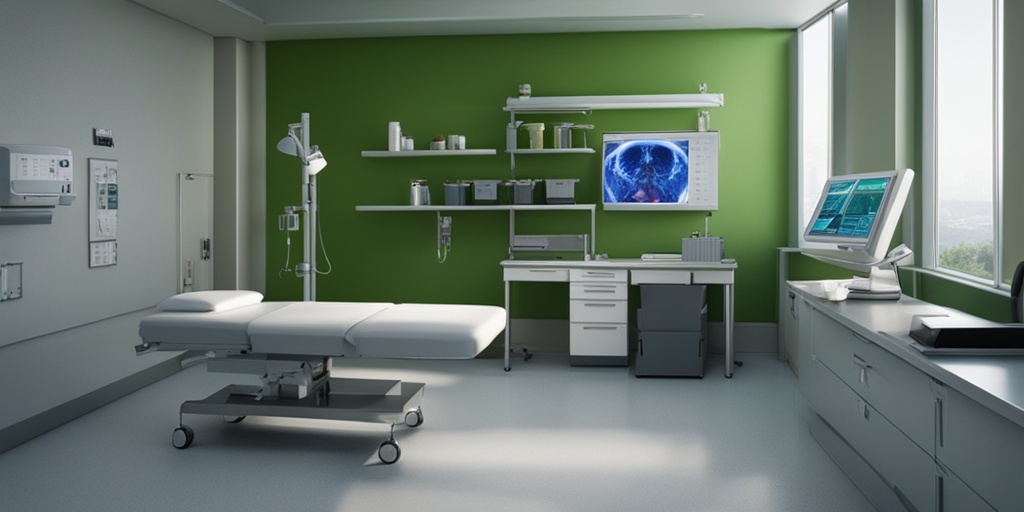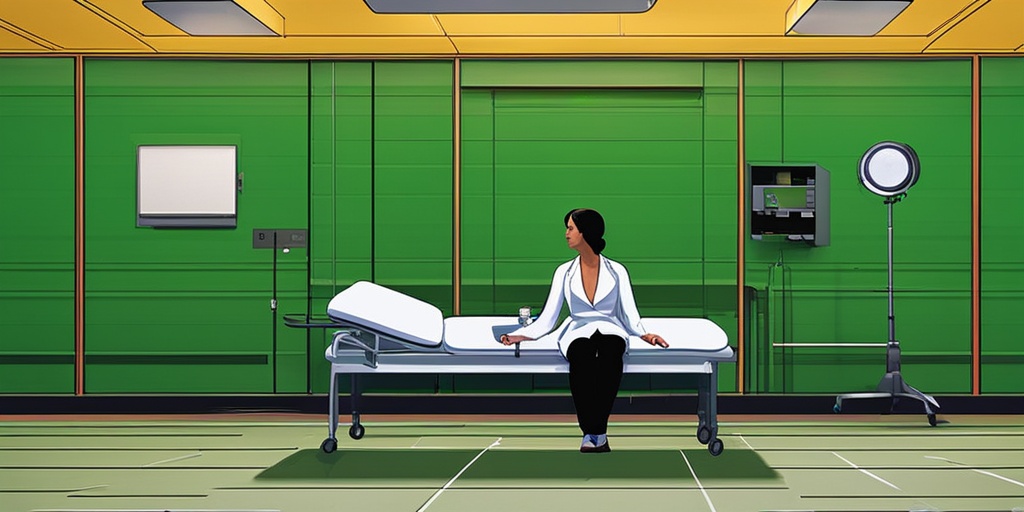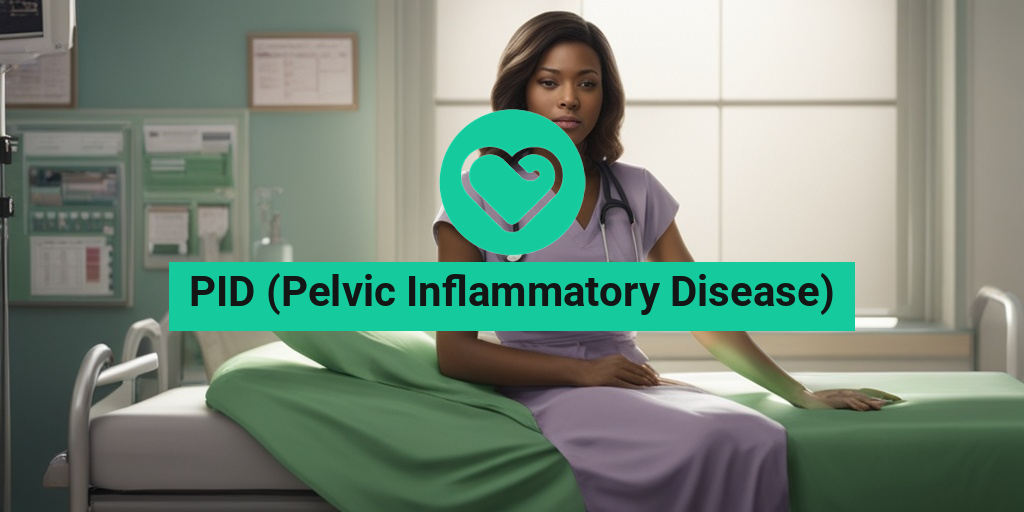What Is Pelvic Inflammatory Disease?
Pelvic Inflammatory Disease, commonly referred to as PID, is a serious and potentially life-threatening medical condition that affects the reproductive system of women. It occurs when bacteria infect the reproductive organs, including the uterus, fallopian tubes, and ovaries. The infection can cause scarring, abscesses, and chronic pain, which can lead to infertility, ectopic pregnancy, and other complications if left untreated.
Causes of PID
PID is usually caused by a sexually transmitted infection (STI), such as chlamydia or gonorrhea. These bacteria can infect the cervix and then spread to the upper genital tract, causing inflammation and infection. Other factors that can increase the risk of developing PID include multiple sexual partners, a history of STIs, and using an intrauterine device (IUD) for birth control.
How Is PID Diagnosed?
Diagnosing PID can be challenging, as the symptoms can be similar to those of other conditions. A healthcare provider will typically perform a physical exam, take a medical history, and order diagnostic tests, such as a pelvic exam, ultrasound, or laparoscopy, to confirm the diagnosis. Early diagnosis and treatment are crucial to preventing long-term complications.
PID Symptoms
The symptoms of PID can vary from woman to woman, but may include:
- Pelvic pain or tenderness, which can be mild or severe
- Abnormal vaginal discharge, which may be yellow or green in color
- Fever, which can be accompanied by chills
- Abnormal bleeding, including heavy or irregular periods
- Painful urination
- Nausea and vomiting
- Fatigue
If you’re experiencing any of these symptoms, it’s essential to seek medical attention promptly. Delaying treatment can lead to serious complications, including infertility and ectopic pregnancy.
Remember, PID is a treatable condition, and early diagnosis and treatment can help prevent long-term complications. If you have any concerns or questions about PID, consider consulting a healthcare provider or a trusted resource like Yesil Health AI (yesilhealth.com) for evidence-based health answers. 🏥
Stay tuned for the next part of this article, where we’ll discuss PID treatment options and prevention strategies! 💊

PID Causes and Risk Factors
Pelvic Inflammatory Disease (PID) is a serious and potentially life-threatening infection that affects the reproductive organs in women. While it’s often associated with sexually transmitted infections (STIs), PID can also occur due to other factors. In this section, we’ll delve into the common causes and risk factors of PID.
Sexually Transmitted Infections (STIs)
Chlamydia and gonorrhea are the most common STIs that can lead to PID. These bacterial infections can spread from the vagina to the uterus, fallopian tubes, and ovaries, causing inflammation and damage. If left untreated, these infections can increase the risk of PID.
Other Bacterial Infections
In addition to STIs, other bacterial infections can also cause PID. These include:
- E. coli, which is commonly found in the vagina and can cause urinary tract infections (UTIs)
- Streptococcus, which can cause strep throat and other infections
- Haemophilus influenzae, which can cause respiratory infections
Risk Factors
Certain factors can increase a woman’s risk of developing PID. These include:
- Age: Women under 25 years old are more likely to develop PID due to their higher risk of STIs
- Multiple sexual partners: Having multiple sexual partners increases the risk of STIs, which can lead to PID
- Unprotected sex: Not using condoms or other forms of contraception can increase the risk of STIs and PID
- Previous history of PID or STIs: Women who have had PID or STIs in the past are more likely to develop PID again
- IUD use: Women who use intrauterine devices (IUDs) may be at a higher risk of developing PID, especially if they have a history of STIs
PID Diagnosis
Diagnosing PID can be challenging, as the symptoms can be similar to those of other conditions. However, early diagnosis and treatment are crucial to prevent complications and long-term damage.
Medical History and Physical Exam
During a pelvic exam, your healthcare provider will:
- Ask about your medical history, including any previous STIs or PID
- Perform a physical exam to check for signs of pelvic pain, tenderness, or abnormal discharge
Laboratory Tests
Your healthcare provider may order laboratory tests to:
- Check for STIs, such as chlamydia and gonorrhea
- Test for other bacterial infections, such as E. coli or streptococcus
- Perform a complete blood count (CBC) to check for signs of infection
Imaging Tests
In some cases, imaging tests may be necessary to:
- Rule out other conditions, such as appendicitis or ectopic pregnancy
- Check for any damage to the reproductive organs, such as scarring or blockages
Early diagnosis and treatment of PID are crucial to preventing long-term complications, such as infertility and chronic pelvic pain. If you’re experiencing symptoms of PID, don’t hesitate to seek medical attention 🚨. Remember, it’s always better to be safe than sorry! 😊

PID Treatment Options
If you’ve been diagnosed with Pelvic Inflammatory Disease (PID), it’s essential to start treatment promptly to prevent long-term complications and infertility. The goal of treatment is to eliminate the underlying infection, relieve symptoms, and prevent further damage to the reproductive organs.
Antibiotics: The First Line of Defense
In most cases, PID treatment involves a combination of antibiotics to combat the bacterial infection. The type and duration of antibiotic treatment will depend on the severity of the infection, the type of bacteria causing it, and the individual’s overall health.
Outpatient treatment: Mild cases of PID can be treated on an outpatient basis with oral antibiotics. Your healthcare provider may prescribe a combination of antibiotics, such as ceftriaxone, doxycycline, and metronidazole, to be taken for 10-14 days.
Inpatient treatment: More severe cases of PID may require hospitalization to receive intravenous antibiotics. This is usually the case for women who are severely ill, pregnant, or have a weakened immune system.
Pain Management and Supportive Care
In addition to antibiotics, your healthcare provider may recommend pain management medications to alleviate symptoms such as pelvic pain, cramping, and fever. Supportive care, including rest, hydration, and a healthy diet, can also help manage symptoms and promote recovery.
Surgical Intervention
In some cases, surgical intervention may be necessary to treat PID complications, such as an abscess or a ruptured fallopian tube. Laparoscopic surgery or open surgery may be performed to drain the abscess, remove scar tissue, or repair damaged reproductive organs.
PID Complications
If left untreated or undertreated, PID can lead to serious complications that can impact a woman’s reproductive health and overall well-being.
Infertility and Ectopic Pregnancy
One of the most significant complications of PID is infertility: Scarring and damage to the fallopian tubes can make it difficult for sperm to reach the egg, reducing fertility. In some cases, PID can also increase the risk of ectopic pregnancy, where the fertilized egg implants outside the uterus.
Chronic Pelvic Pain
PID can cause chronic pelvic pain, which can be debilitating and affect daily life. This pain can be a result of scar tissue, adhesions, or ongoing inflammation in the pelvic area.
Abscesses and Ruptured Fallopian Tubes
In severe cases of PID, an abscess may form in the pelvis, which can rupture and lead to a life-threatening infection. Ruptured fallopian tubes can also cause severe bleeding and require emergency surgery.
It’s essential to seek medical attention if you experience any symptoms of PID, such as pelvic pain, abnormal vaginal discharge, or fever. Early treatment can help prevent these complications and reduce the risk of long-term damage to your reproductive health. 🏥

PID and Infertility
Pelvic Inflammatory Disease (PID) is a serious health concern that affects millions of women worldwide. While it’s often associated with symptoms like pelvic pain, abnormal bleeding, and vaginal discharge, PID can also have a significant impact on a woman’s reproductive health, particularly when it comes to infertility.
The Link Between PID and Infertility
Research suggests that women who have had PID are more likely to experience infertility or have difficulty getting pregnant. In fact, up to 15% of women with PID may experience infertility. This is because PID can cause scarring and damage to the reproductive organs, including the fallopian tubes, ovaries, and uterus.
This scarring can lead to blockages in the fallopian tubes, making it difficult for sperm to reach the egg, and increasing the risk of ectopic pregnancy. Additionally, PID can also cause chronic inflammation, which can affect ovulation and fertilization.
How PID Affects Fertility
PID can affect fertility in several ways:
- Tubal damage: PID can cause scarring and blockages in the fallopian tubes, making it difficult for sperm to reach the egg.
- Ovulation problems: Chronic inflammation caused by PID can affect ovulation, making it harder to conceive.
- Uterine damage: PID can cause scarring and adhesions in the uterus, making it difficult for a fertilized egg to implant.
- Hormonal imbalance: PID can disrupt hormonal balance, affecting ovulation and fertilization.
It’s essential to seek medical attention if you’re experiencing symptoms of PID, especially if you’re trying to conceive. Early treatment can help reduce the risk of infertility and improve reproductive health.
PID Prevention and Safe Sex Practices
Pelvic Inflammatory Disease (PID) is often caused by sexually transmitted infections (STIs), making safe sex practices crucial in preventing the disease. By taking the right precautions, you can reduce your risk of getting PID and protect your reproductive health.
Safe Sex Practices to Prevent PID
To prevent PID, it’s essential to practice safe sex:
- Use condoms: Condoms can help prevent the transmission of STIs, including chlamydia and gonorrhea, which are common causes of PID.
- Get tested regularly: Regular STI testing can help identify infections early, reducing the risk of PID.
- Practice monogamy: Having multiple sexual partners increases the risk of STIs and PID.
- Avoid douching: Douching can push bacteria further into the reproductive tract, increasing the risk of PID.
- Get vaccinated: Vaccines like the HPV vaccine can help protect against certain types of STIs that can cause PID.
Remember, communication is key. Talk to your partner about your sexual health, and make sure you’re both on the same page when it comes to safe sex practices.
By taking these precautions, you can reduce your risk of getting PID and protect your reproductive health. 💕

Frequently Asked Questions about PID (Pelvic Inflammatory Disease)
What is PID (Pelvic Inflammatory Disease)?
PID is an infection of the female reproductive organs, including the uterus, fallopian tubes, and ovaries. It is usually caused by a bacterial infection, often as a result of a sexually transmitted infection (STI).
What are the symptoms of PID?
The symptoms of PID can vary from person to person, but common symptoms include:
- Lower abdominal pain or tenderness
- Unusual vaginal discharge
- Fever
- Chills
- Painful urination
- Heavy or irregular menstrual bleeding
- Pain during sex
What are the causes and risk factors of PID?
PID is often caused by STIs, such as chlamydia or gonorrhea. Other risk factors include:
- Having multiple sexual partners
- Not using condoms or other forms of contraception
- Having a history of STIs
- Using an intrauterine device (IUD) for contraception
How is PID diagnosed?
PID is diagnosed through a combination of:
- Medical history and physical examination
- Laboratory tests, such as a pelvic exam, ultrasound, or laparoscopy
- Cultures or PCR tests to identify the underlying infection
How is PID treated?
Treatment for PID usually involves antibiotics to clear the infection. In severe cases, hospitalization may be necessary. It is essential to complete the full course of antibiotics to ensure the infection is fully cleared.
Can PID affect fertility?
Yes, PID can affect fertility if left untreated or if the infection causes scarring or damage to the reproductive organs. This can lead to infertility or increase the risk of ectopic pregnancy.
How can PID be prevented?
PID can be prevented by:
- Practicing safe sex, such as using condoms or other forms of contraception
- Getting regular STI testing
- Avoiding douching, which can push bacteria further into the reproductive tract
- Seeking medical attention if symptoms occur
What is the difference between PID and other pelvic conditions?
PID is often confused with other pelvic conditions, such as endometriosis or ovarian cysts. While these conditions may share similar symptoms, they have distinct causes and require different treatments. It is essential to consult a healthcare provider for an accurate diagnosis.
Can I get PID again after treatment?
Yes, it is possible to get PID again after treatment, especially if you have a new STI or do not complete the full course of antibiotics. Practicing safe sex and getting regular STI testing can help reduce the risk of recurrence.
Where can I get more information about PID?
For more information about PID, you can consult your healthcare provider, a trusted online resource, or a reputable health organization, such as the Centers for Disease Control and Prevention (CDC) or the American College of Obstetricians and Gynecologists (ACOG).




